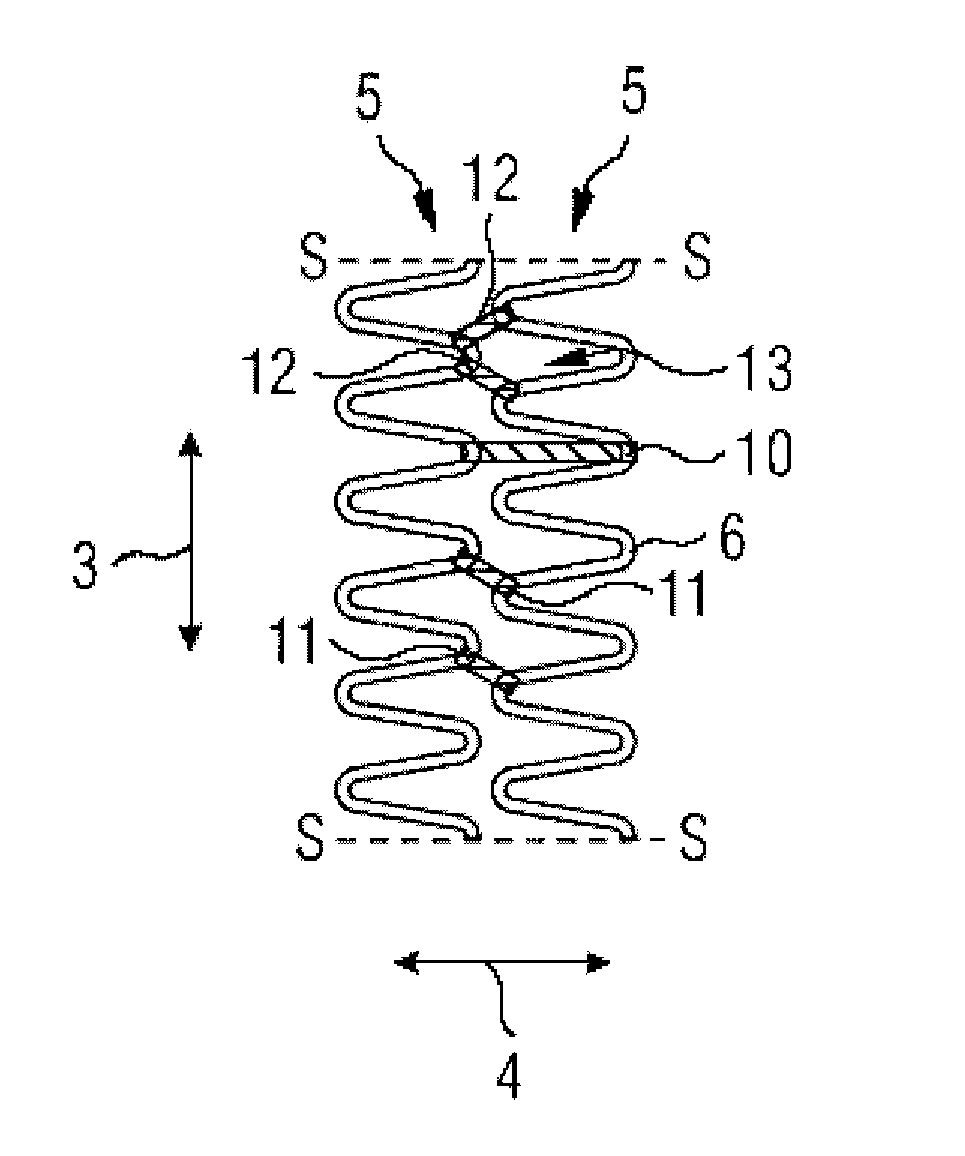Support Prosthesis
- Summary
- Abstract
- Description
- Claims
- Application Information
AI Technical Summary
Benefits of technology
Problems solved by technology
Method used
Image
Examples
Embodiment Construction
[0030]FIG. 1 is a perspective view of a stent 1 comprising a tubular casing 2. The casing 2 has a large number of support rings 5 which extend in a circumferential direction 3, are arranged next to one another in a longitudinal direction 4 and are shown in the following FIG. 2 to 7 on an enlarged scale and cut open along a sectional line S-S.
[0031] The support rings 5 have a meandering, in particular an undulating, course. In the case of the support rings 5 shown in FIG. 2 to 7, which display an undulating course, curves 6 are connected by straight support struts 7. A curve 6 and two adjacent support struts 7 form, in each case, a loop 8. Successive loops 8 therefore share a respective support strut 7.
[0032] For implantation, the stent 1 is crimped onto what is known as a balloon catheter. The balloon catheter is then brought to the point to be widened of the vessel to be treated, where it is expanded. This stretches the support rings 5 in the circumferential direction 3. In parti...
PUM
 Login to View More
Login to View More Abstract
Description
Claims
Application Information
 Login to View More
Login to View More - R&D
- Intellectual Property
- Life Sciences
- Materials
- Tech Scout
- Unparalleled Data Quality
- Higher Quality Content
- 60% Fewer Hallucinations
Browse by: Latest US Patents, China's latest patents, Technical Efficacy Thesaurus, Application Domain, Technology Topic, Popular Technical Reports.
© 2025 PatSnap. All rights reserved.Legal|Privacy policy|Modern Slavery Act Transparency Statement|Sitemap|About US| Contact US: help@patsnap.com



